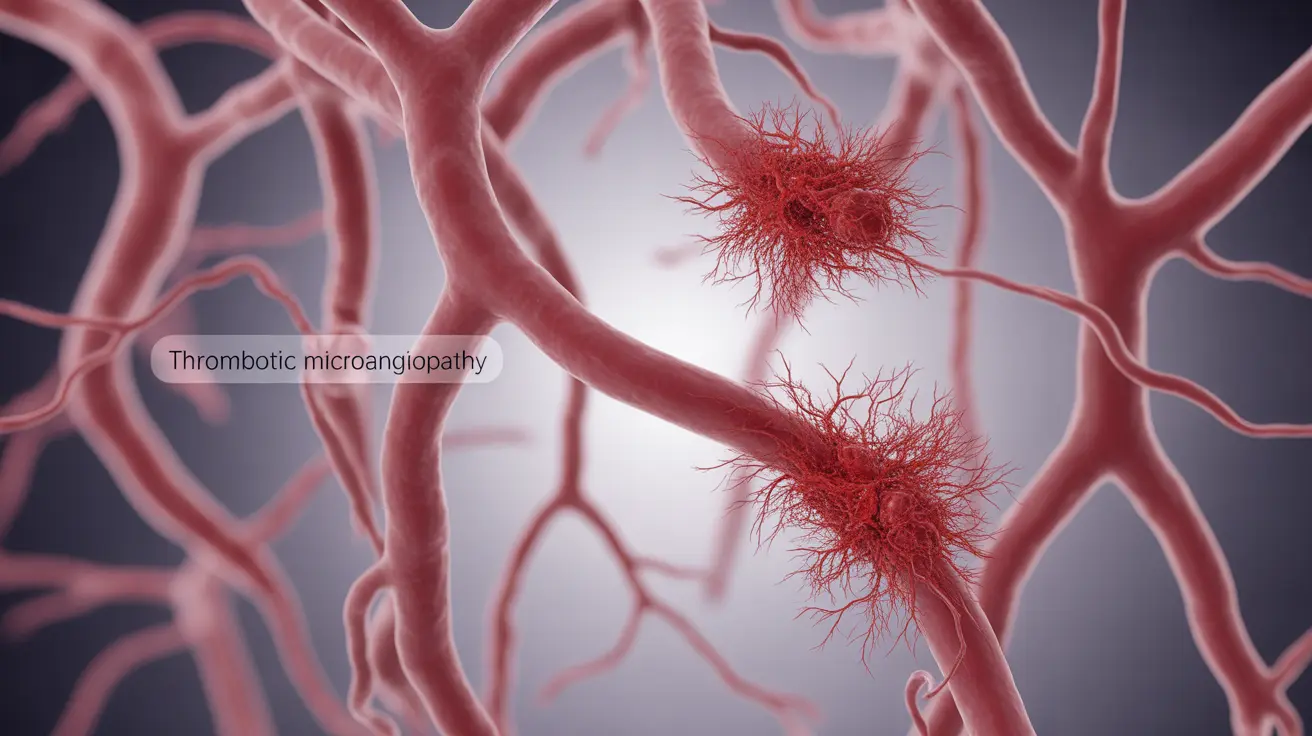Thrombotic microangiopathy (TMA) is a serious medical condition that affects small blood vessels throughout the body. This complex disorder can lead to blood clot formation in small vessels, potentially causing damage to vital organs, particularly the kidneys. Understanding TMA is crucial for early detection and proper medical intervention.
In this comprehensive guide, we'll explore what TMA means, its symptoms, causes, and available treatment options. We'll also discuss how this condition affects kidney function and what medical professionals look for when diagnosing it.
What Is Thrombotic Microangiopathy?
Thrombotic microangiopathy occurs when small blood vessels become damaged and develop blood clots. This process leads to the destruction of red blood cells as they pass through the damaged vessels, resulting in decreased blood flow to various organs. The condition can affect multiple organ systems, but it most commonly impacts the kidneys.
Common Signs and Symptoms
TMA can present with various symptoms, which may develop gradually or appear suddenly. The most common signs include:
- Unusual bruising or bleeding
- Extreme fatigue
- Confusion or mental changes
- High blood pressure
- Decreased urination
- Pale or yellowish skin
- Fever
- Weakness
Impact on Kidney Function
The kidneys are particularly vulnerable to damage from TMA because they contain numerous small blood vessels. When TMA affects the kidneys, it can lead to:
- Acute kidney injury
- Chronic kidney disease
- Proteinuria (excess protein in urine)
- Decreased filtration capacity
- High blood pressure
Causes and Risk Factors
TMA can develop due to various underlying conditions and factors. Common causes include:
- Genetic mutations affecting complement proteins
- Autoimmune disorders
- Certain medications
- Pregnancy complications
- Infections
- Cancer
- Organ transplantation
Diagnosis and Testing
Diagnosing TMA requires a comprehensive medical evaluation. Healthcare providers typically perform:
- Blood tests to check platelet counts
- Kidney function tests
- Genetic testing
- Blood smear examination
- Complement protein analysis
- Organ function assessments
Treatment Approaches
Treatment for TMA varies depending on the underlying cause and severity. Common therapeutic approaches include:
- Plasma exchange therapy
- Complement-inhibiting medications
- Immunosuppressive drugs
- Supportive care measures
- Blood pressure management
- Regular monitoring of organ function
Frequently Asked Questions
What does the medical abbreviation TMA stand for and what does thrombotic microangiopathy mean?
TMA stands for thrombotic microangiopathy. It refers to a condition where small blood vessels become damaged and develop clots, leading to the destruction of red blood cells and potential organ damage.
What are the common symptoms and signs of thrombotic microangiopathy (TMA)?
Common symptoms include unusual bruising, extreme fatigue, confusion, high blood pressure, decreased urination, pale skin, fever, and weakness. These symptoms can develop gradually or appear suddenly.
How does thrombotic microangiopathy affect kidney function and what are the potential kidney-related complications?
TMA can severely impact kidney function by damaging small blood vessels within the kidneys. This can lead to acute kidney injury, chronic kidney disease, protein in the urine, and persistent high blood pressure.
What causes thrombotic microangiopathy and which risk factors increase the likelihood of developing TMA?
TMA can be caused by genetic mutations, autoimmune disorders, certain medications, pregnancy complications, infections, cancer, and organ transplantation. Risk factors include family history, certain medical conditions, and specific medication use.
How is thrombotic microangiopathy diagnosed and what are the typical treatment options?
TMA is diagnosed through blood tests, kidney function tests, genetic testing, and blood smear examination. Treatment options include plasma exchange therapy, complement-inhibiting medications, immunosuppressive drugs, and supportive care measures.




